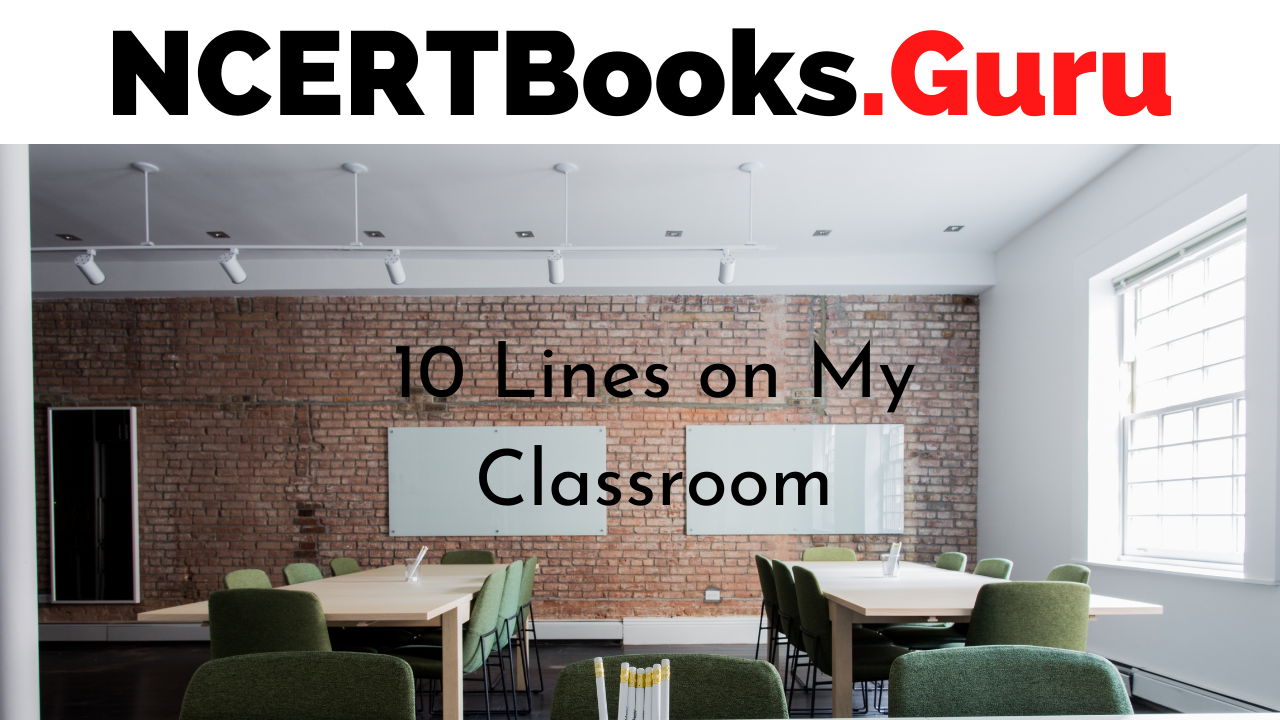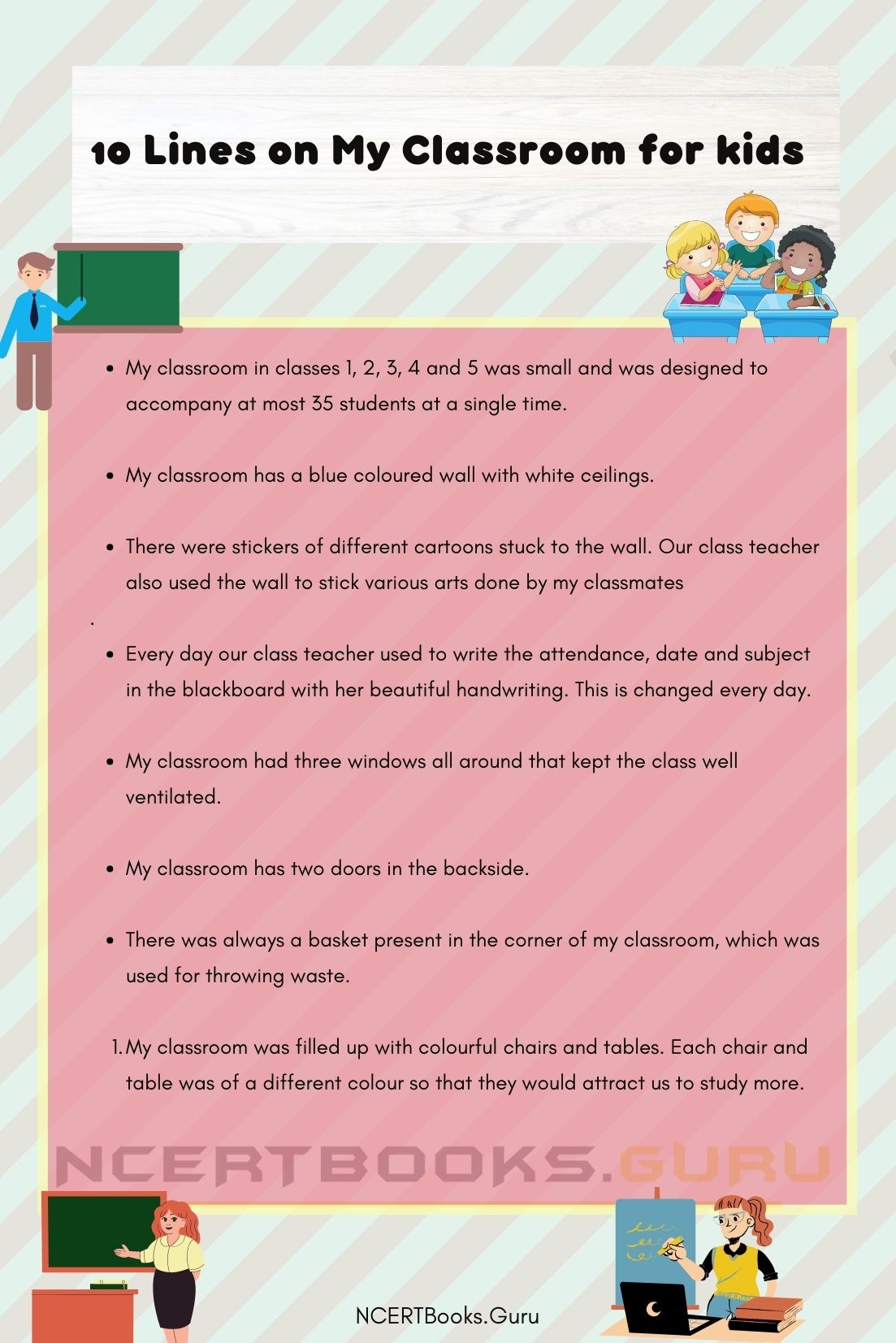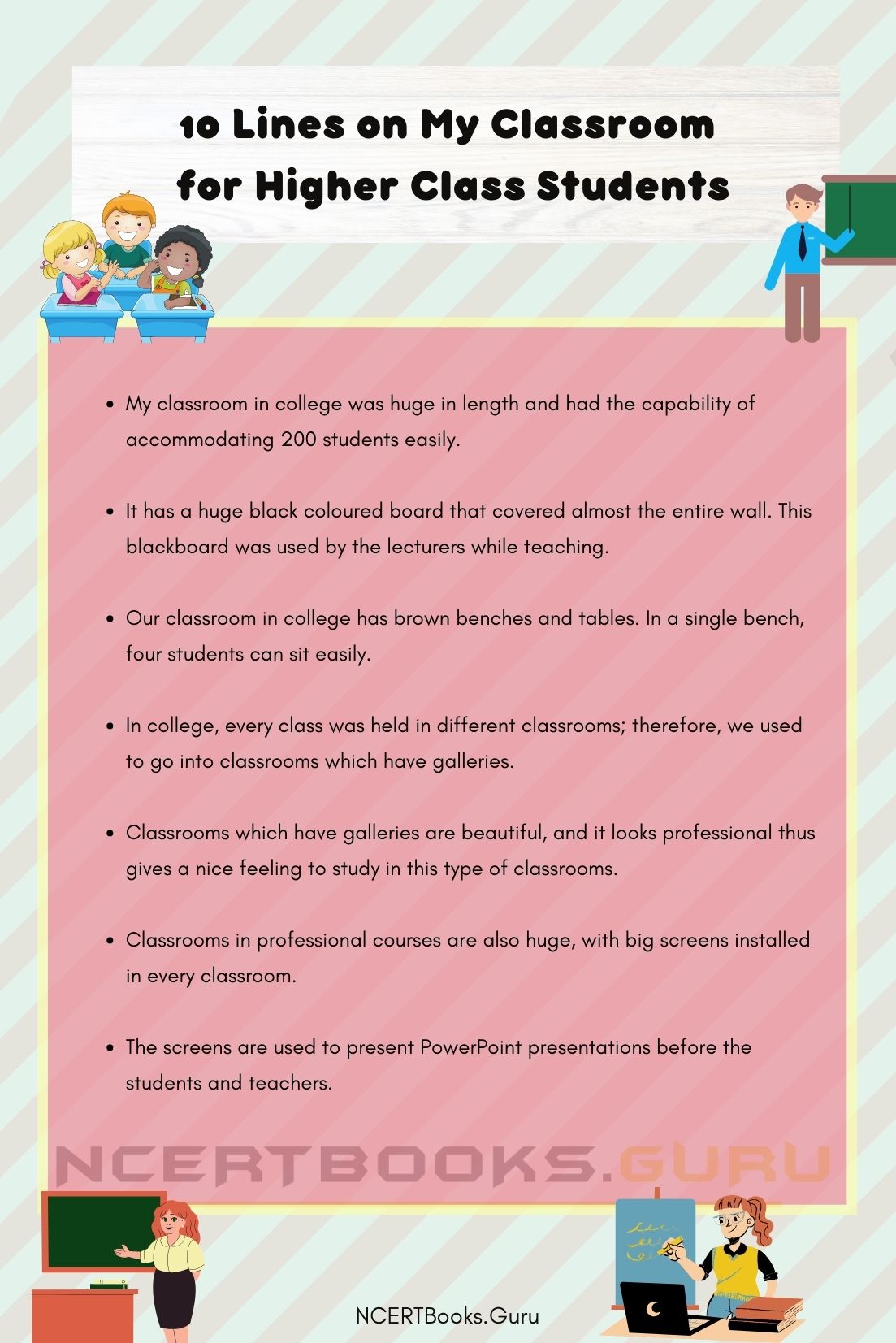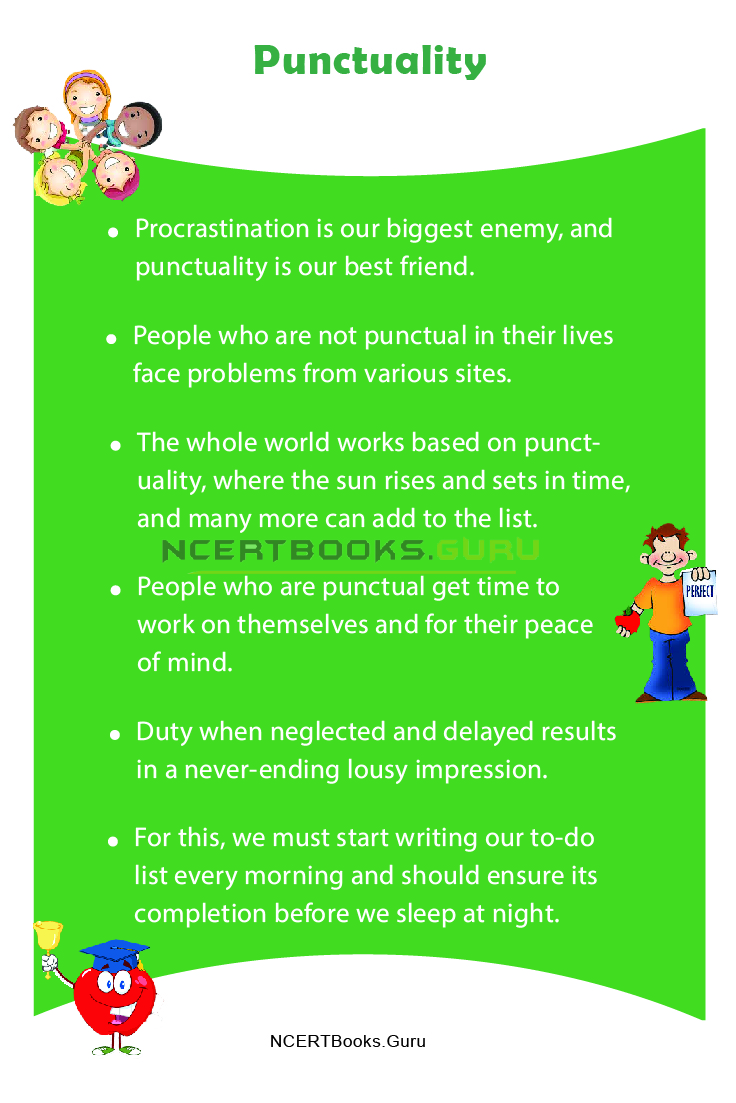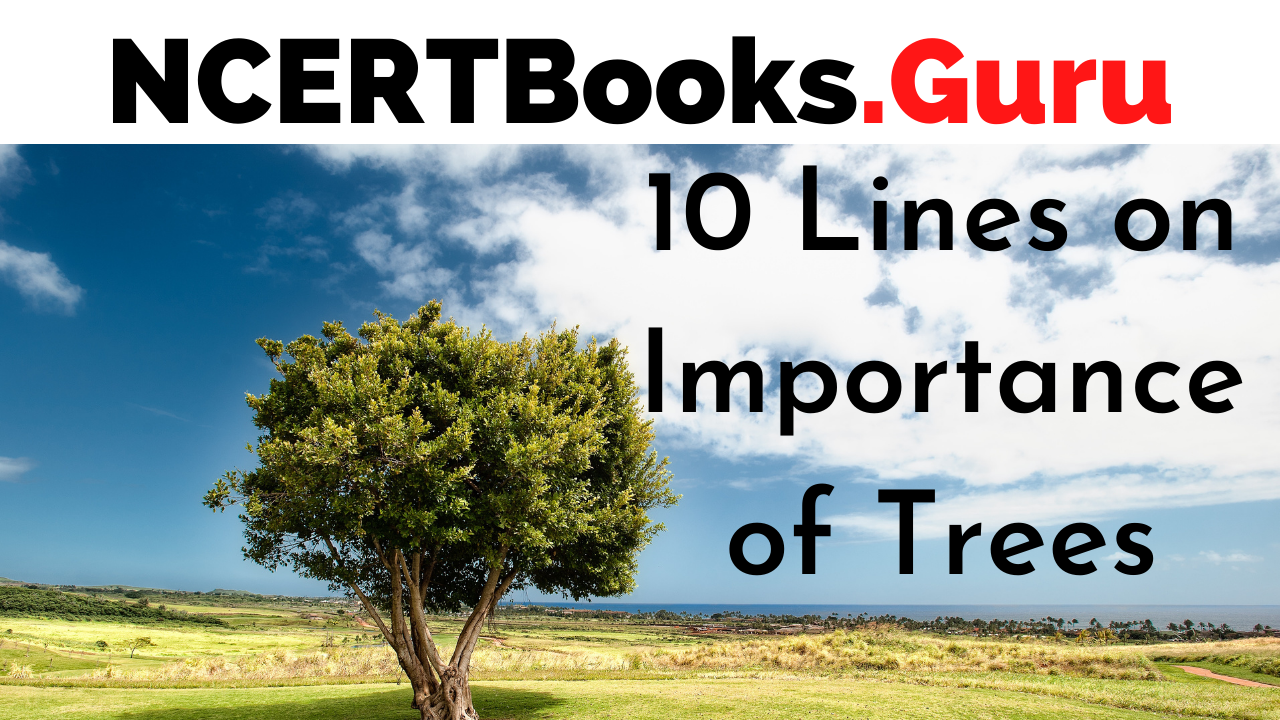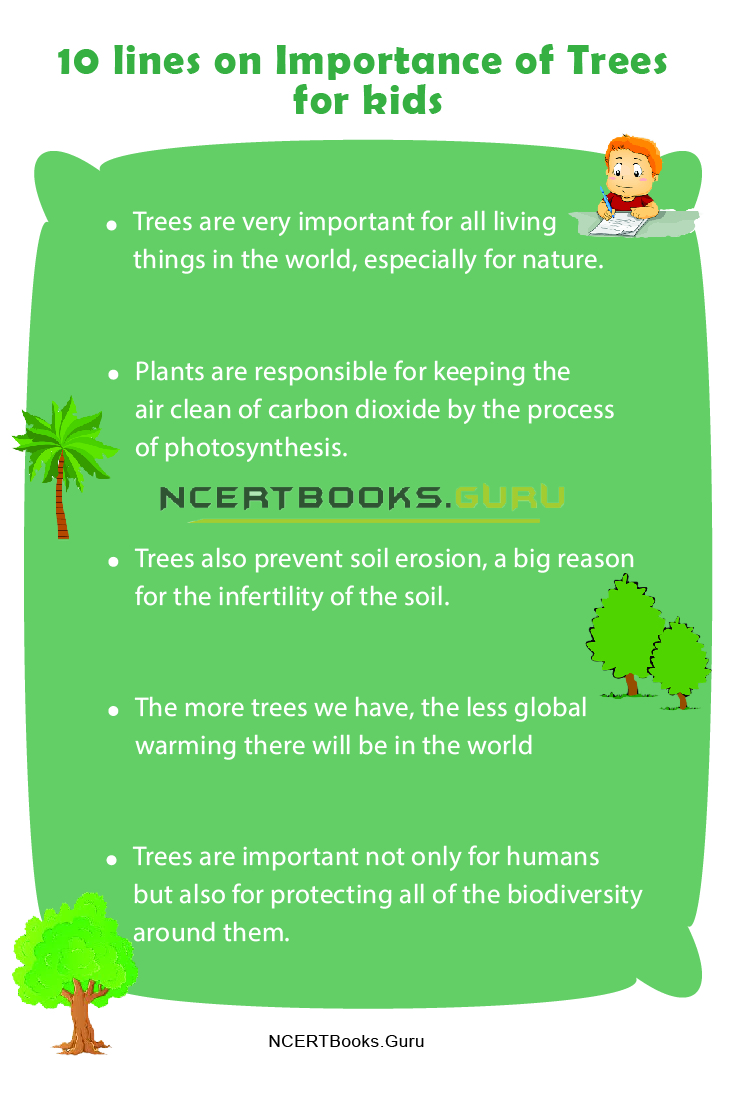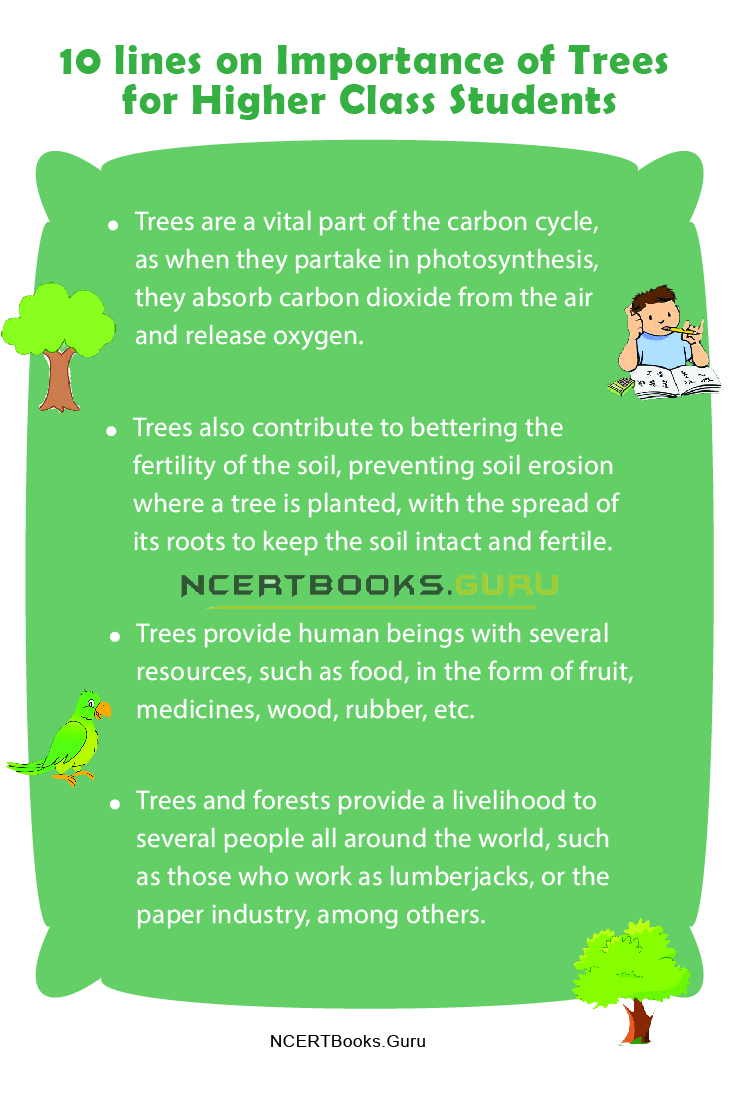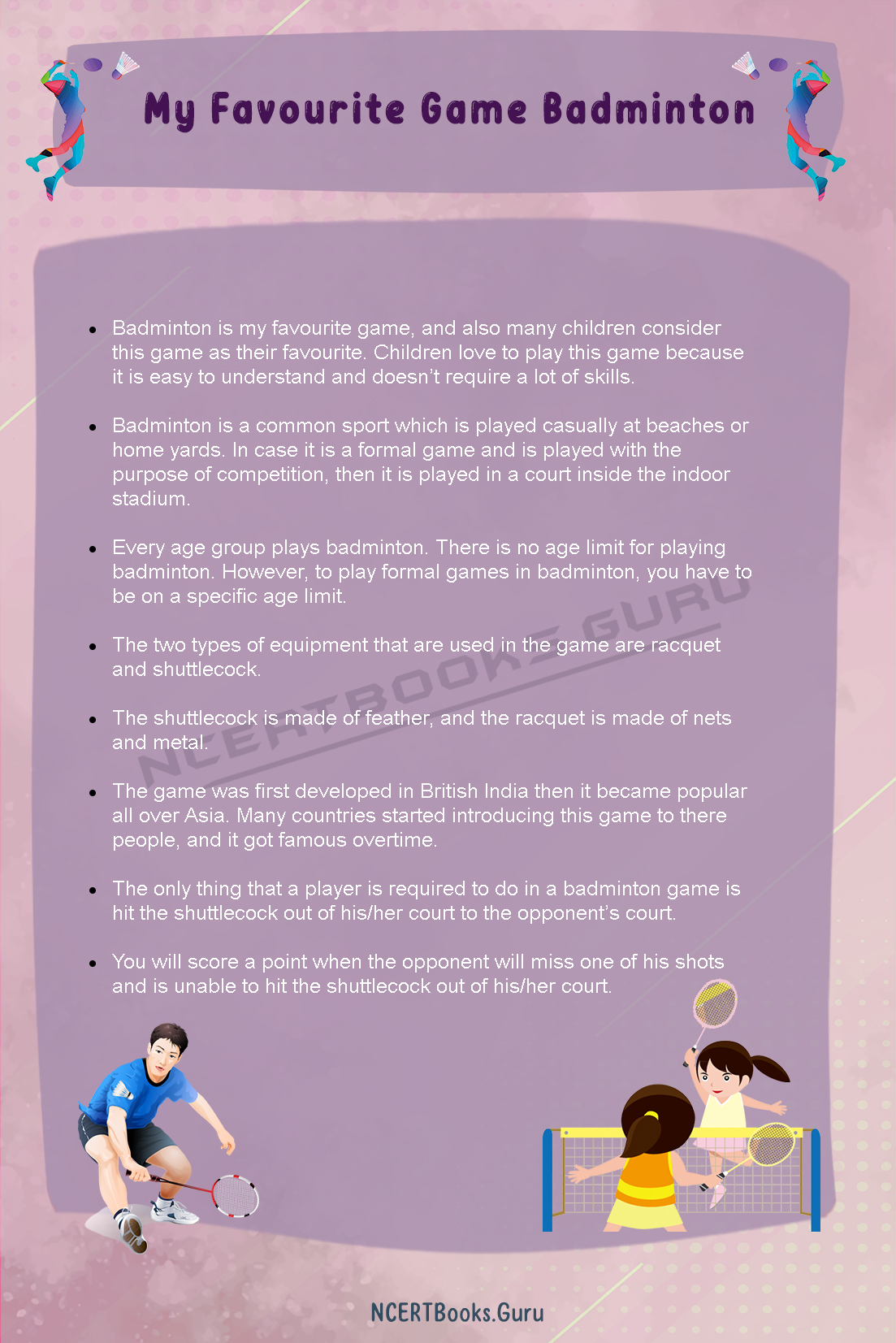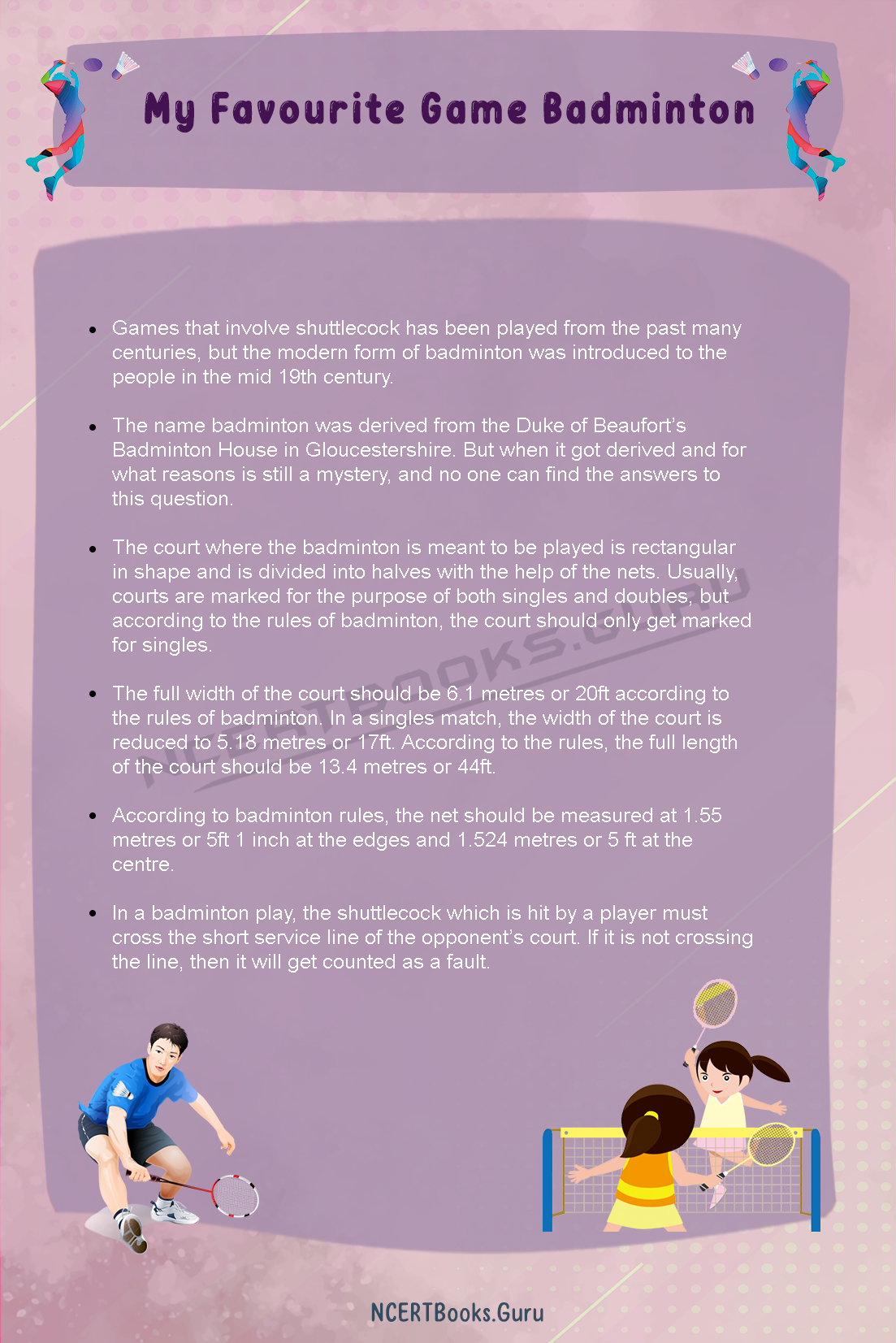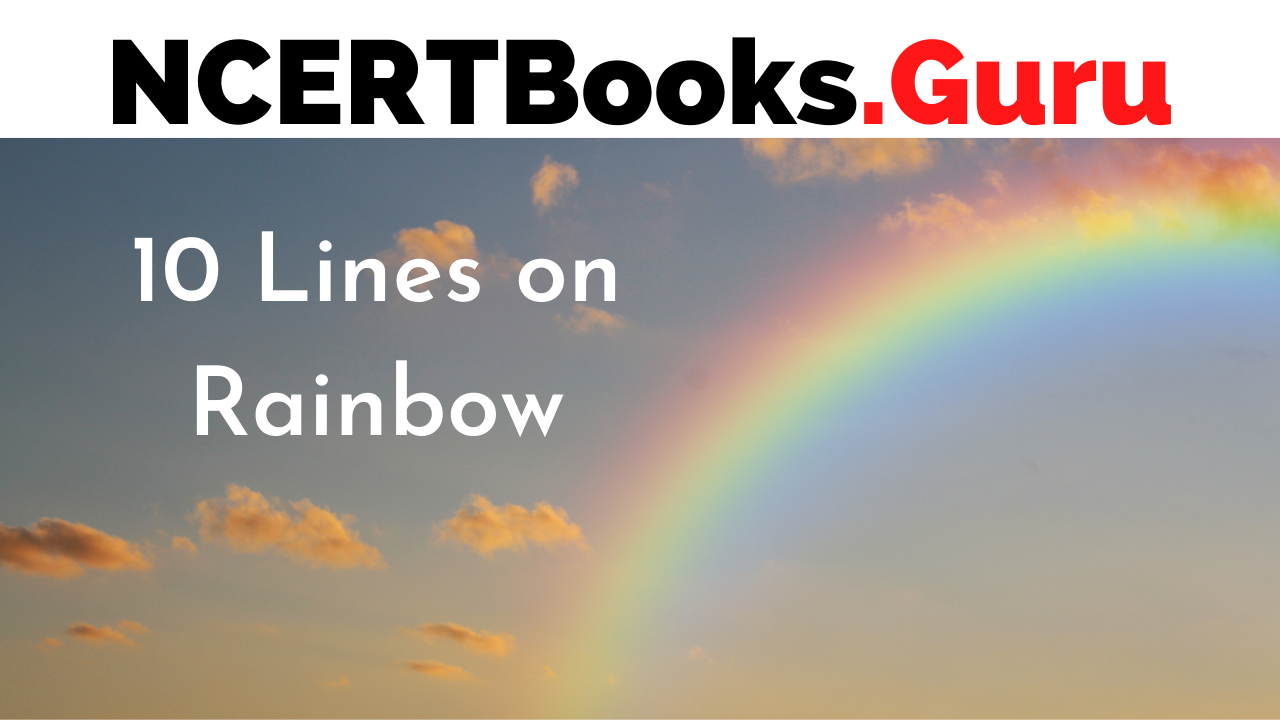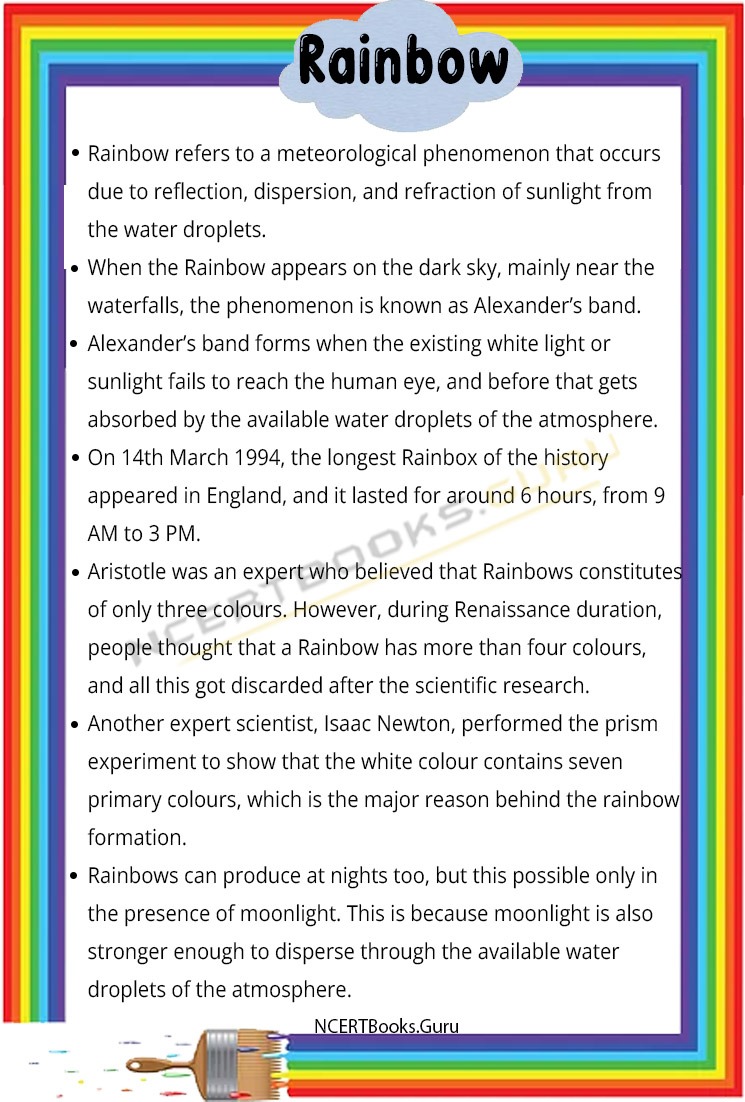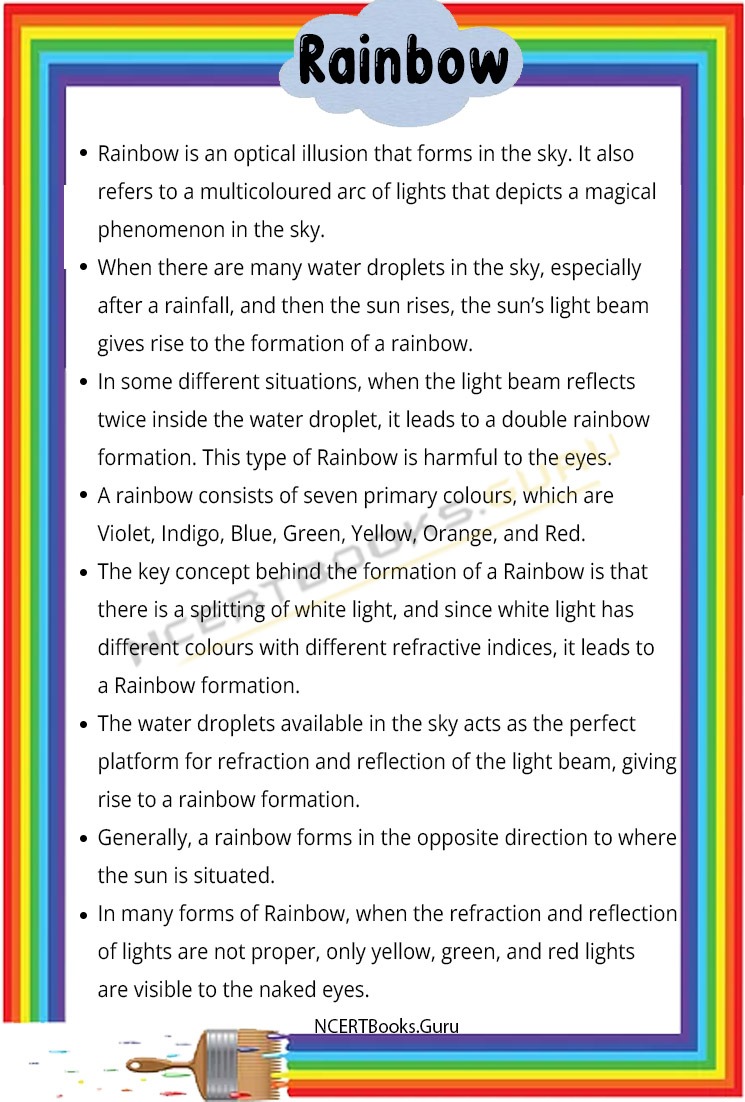10 Lines on Doctors: the work done by doctors shows us how important they are. Learning how to deal with patients with various symptoms is not as easy as it seems. They use their expertise to the best of their knowledge and help patients get the best treatment. Doctors are known for constantly working around the clock so as to ensure that all their patience gets the best treatment. Lately because of the type of monetary exploitations in the industry a lot of doctors are getting bad names.
Every time someone gets injured or falls sick the first person we get diagnosed by is a doctor and this doctor prescribes us the correct treatment which is necessary for us. The Doctor has a lot of practice in treating and can help us with figuring out how to go about the treatment and to help restore the quality of life for a person.
Enhance your vocabulary and writing skills with 10 Lines Essays available. Spark up the creativity in you and access various Topics on 10 Lines all in one place.
Set 1 – 10 Lines on Doctors for kids
This set is made for students studying in classes 1, 2,3,4, and 5.
- To celebrate doctor Bidhan Roy and all the doctors we celebrate doctors day on 1st July.
- The doctor’s job is very important and sacred and must be protected at all costs. Since it saves a lot of lives the integrity of the job must not be lost.
- In rural areas in India, it is hard to find good doctors. A lot of doctors in this area come with fake degrees.
- The government set up hospital facilities are terrible as they have poor equipment and not good staff whereas the private hospitals have more expensive treatments and come with better infrastructure.
- The most used homoeopathic treatment is Ayurveda and it has been in the country for a very long time and has been in practice for centuries.
- In India, the MBBS course takes around five years and is actually a rigorous course to get into.
- The Hippocratic oath is the oath every doctor takes where they swear to follow all the rules set by my medical practices.
- The different kind of specialty doctors are pediatricians, Oncologists, cardiologists, general physicians, gynecologists, neurologists, dermatologists, and psychiatrists
- Doctors work around the clock to serve patients and save lives
- Doctors prescribe the appropriate treatment and diagnose patients.
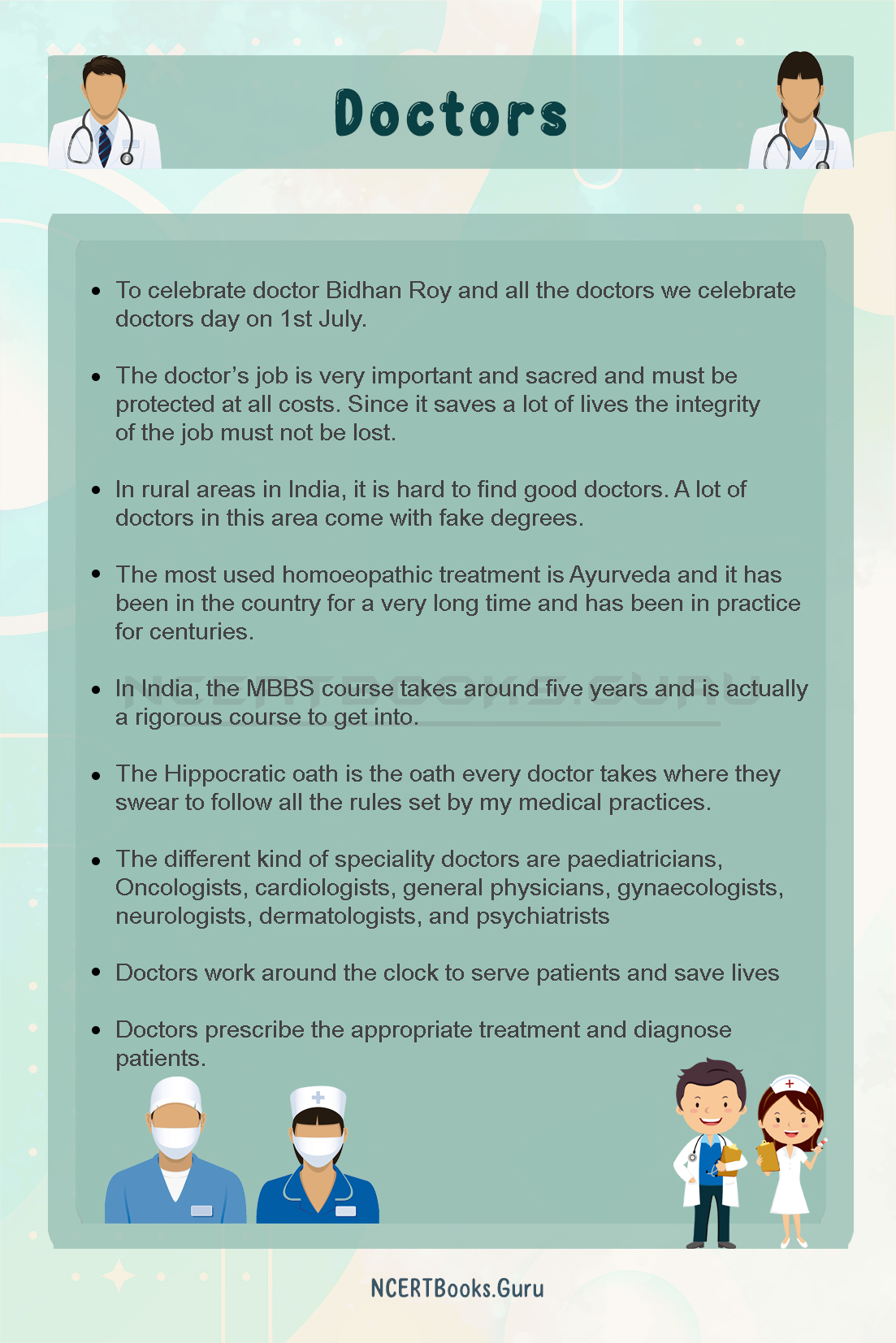
Set 2 – 10 Lines on Doctors for School Children
This set is prepared for students in classes 6, 7, and 8.
- Doctors are commonly referred to as life saviours and they help patients whether they are sick or injured and try to provide the best possible treatment.
- Docs have quite a tough job as they usually don’t get many holidays and have to work around the clock without getting many holidays.
- Doctors are constantly called in for emergencies and they can determine the type of illness the patient is suffering from and be able to help them recover. To help mankind they put a lot of risks.
- It requires a lot of training and expertise for doctors and the profession isn’t an easy one.
- To get personal treatments you have to ask for the specific doctor
- There are countless diseases and doctors and scientists are in charge of finding the cure. They help humankind in so many different ways.
- Ayurveda is one of the oldest practices in medicine in India and her doctors use different herbal plants to treat the sickness.
- There are many medical colleges in India with a lot of practising hospitals and clinics that are present.
- 1st July is marked as National Doctors Day.
- The Hippocratic oath is the oath taken by doctors everywhere they swear to follow all the rules set by my medical practices.
Set 3 – 10 Lines on Doctors for Higher Class Students
This set is for students in classes 9, 10 11, and 12.
- Every doctor takes the Hippocratic oath where they are required to follow the various guidelines set by a medical practice in the country.
- As medical Practitioners, doctors are commonly called life saviors because of the patients they deal with and all the lives they save, and without any form of medical intervention, a lot of these patients would suffer a lot.
- Most doctors are known to work around the clock as their jobs are so demanding they have to constantly be at work and are also always called away for emergencies.
- Doctors specialize in many fields because each field caters to different types of treatment. The different specializations include paediatricians, Oncologists, cardiologists, general physicians, gynaecologists, neurologists, dermatologists, and psychiatrists
- Students who want to become doctors need to decide during their school years, by taking science from early on in thor 11th and 12th class and then taking up MBBS which is for 5 years.
- The Healthcare sector faces a lot of problems and these problems include bad infrastructure, pure facilities, and not good practitioners.
- Doctors can also take advantages of patience and prescribe tests that are unnecessary and will just bring the patient’s bill higher.
- The most used homeopathic treatment in Ayurveda has been in the country for a very long time and has been in practice for centuries.
- In India, there is a lot of corruption among doctors who try to take advantage of uninformed patients.
- There is low availability of good doctors in rural areas.

Frequently Asked Questions on Doctors
Question 1.
when is doctors’ day celebrated in India?
Answer:
To celebrate doctor Bidhan Roy and all the doctors we celebrate doctors day on 1st July.
Question 2.
What are the types of doctors?
Answer:
The type of doctors include paediatricians, Oncologists, cardiologists, general physicians, gynaecologists, neurologists, dermatologists, and psychiatrists.
Question 3.
what is the Hippocratic oath?
Answer:
Every doctor takes the Hippocratic oath where they are required to follow the various guidelines set by a medical practice in the country.
Question 4.
Why are doctors called life saviours?
Answer:
As medical Practitioners, doctors are commonly called life saviours because of the patients they deal with and all the lives they save, and without any form of medical intervention, a lot of these patients would suffer a lot.
Read More: I Want To Become A Doctor Essay

